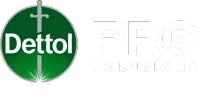

Cleaning & Disinfecting Schools For Effective Infection & Disease Control
Clean and safe schools are important for a hygienic learning experience. However, with an increase in the number of densely populated areas and quick and easy spread of germs and bacteria, controlling infections and diseases from spreading in schools can be difficult and, in some cases, near impossible.
Janitorial staff, teachers, and students play an important role in maintaining a clean school environment. So, the cleaning products used in schools need to be effective against germs, bacteria, and viruses.
Frequent cleaning and disinfecting are imperative to combat illness-causing germs from spreading within schools. The first line of defense includes washing hands frequently with antibacterial soap or liquid hand wash , covering coughs and sneezes, disinfecting often touched surfaces via antiseptic liquid , using the best school cleaning products, and more.
Read our article to learn more about how regular and thorough cleaning and disinfecting of schools can help in maintaining an efficient infection and disease control.
Difference between cleaning, disinfecting, and sanitizing
- Cleaning removes most of the dirt, impurities, and germs from surfaces or objects. It is done using soap or detergent solution. This process may not necessarily kill germs.
- Disinfecting kills germs and bacteria from surfaces. Disinfection works through disinfecting chemicals such as Dettol antiseptic liquid or disinfectant spray to eliminate 99.9% of germs.
- Sanitizing means lowering the number of germs on any surfaces or objects to a safe level. This level can be achieved by cleaning or disinfecting to reduce the risk of spreading infection and cross-contamination.
Establishing a cleaning and disinfection plan for schools
Schools can help prevent unnecessary infections and diseases by establishing cleaning and disinfection plans and methods that prioritize the school community’s health and safety.
Below is a list of areas that a cleaning and disinfection plan can cover:
- Product selection: The criteria used to determine the cleaning products used in schools.
- Practices and procedures: Methods for cleaning and disinfecting high-touch surfaces and areas such as cafeterias and nurses’ offices and using school cleaning products with minimum exposure to airborne chemicals.
- Ventilation: The specific requirements for storing, mixing, and using chemicals such as bathroom cleaners and multipurpose floor cleaners.
- Personal protective equipment: Needs, training, and equipment fit to keep janitorial staff, teachers, and students safe.
- Factors specific to the population and purpose of rooms and areas: Guidance on what to do if surfaces are hard or soft, are used for eating or preparing food or must be treated in between classes.
Cleaning and disinfecting schools to prevent infectious diseases
Ensuring schools are safe and healthy places to learn helps us improve school conditions so students and staff can thrive. Here are some ideas:
Clean and disinfect surfaces and objects that are often touched
Clean, disinfect, and sanitize surfaces and objects that are often touched, such as desks, countertops, doorknobs, keyboards, faucets, phones, toys, etc.
Immediately clean surfaces and objects visibly soiled through disinfectant liquid or multipurpose antibacterial surface wipes . If surfaces or objects are contaminated with body fluids or blood, use gloves, remove the spill, and then clean and disinfect the surface.
Clean and disinfect correctly
Read the label present on the cleaning products used in schools to ensure they are recommended for use.
In addition, you need to follow the label directions mentioned on the school cleaning products. This is important because some products require separate procedures for cleaning or disinfecting.
Use multipurpose antibacterial surface wipes for electronic items such as computers, phones, keyboards, etc. For surfaces and objects that aren’t visibly dirty, wipe them off with products that clean and disinfect simultaneously, such as Dettol antiseptic disinfectant liquid.
Use products safely
Cleaning products used in schools often require protective equipment such as gloves or eye protection glasses to protect the body from exposure to hazardous chemicals.
Do not mix cleaning products on your own authority, unless the labels indicate it is safe because mixing certain cleaning products can result in severe injury.
Ensure that whoever uses the cleaning product reads and understands all the instructions mentioned on the label.
Final Thoughts
Students, families, and neighborhoods will become stronger, safer, and healthier only when we overcome shared challenges and create collective solutions.
We also need policymakers to address that many schools lack the necessary resources for appropriate cleaning and disinfecting for effective infection and disease control.
Only by distributing resources to meet each school's specific needs will our communities become strong and resilient, and schools will play their full role in the lives of our children and communities.
FAQs
Why is cleaning important in schools?
Cleaning is helpful in stopping germs and bacteria from spreading throughout schools, homes, and the local community.
How do you maintain cleanliness in school?
Tips like frequent hand washing, stocking up on the cleaning supplies like hand sanitizer, disinfectant spray ,antibacterial surface wipes, etc., and cleaning shared objects are some of the most basic methods to maintain cleanliness in school.
What are the materials used for cleaning the school?
The basic materials used for cleaning the school include:
- Mop
- Broom
- Bucket
- Dust Pan
- Cleaning Cloth
- Cleaning Sponge
- Cleaning Glove
- Duster
PLEASE NOTE: All reasonable steps have been taken to ensure the accuracy of the information and material contained in this presentation (“Material”); however, no warranty or representation is provided in respect thereof. Information contained in the Materials is for information and educative purposes only and should not be used as a recommendation or advice. Please refer to product packaging and information and guidance thereon at all times. In no event shall Reckitt Benckiser Group PLC and/or its affiliates be liable for any damages or any other consequence arising from the use of the Material.

